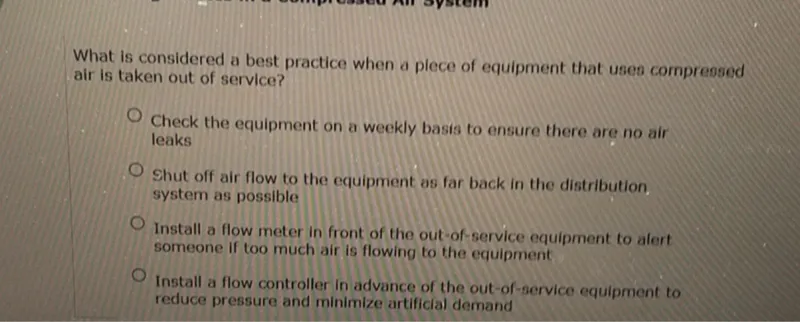Questions: What is considered a best practice when a plece of equipment that uses compressed air is taken out of service? Check the equipment on a weekly basis to ensure there are no air leaks Shut off air flow to the equipment as far back in the distribution system as possible Install a flow meter in front of the out-of-service equipment to alert someone if too much air is flowing to the equipment Install a flow controller in advance of the out-of-service equipment to reduce pressure and minimize artificial demand

Transcript text: What is considered a best practice when a plece of equipment that uses compressed air is taken out of service?
Check the equipment on a weekly basis to ensure there are no air leaks
Shut off air flow to the equipment as far back in the distribution system as possible
Install a flow meter in front of the out-of-service equipment to alert someone if too much air is flowing to the equipment
Install a flow controller in advance of the out-of-service equipment to reduce pressure and minimize artificial demand





